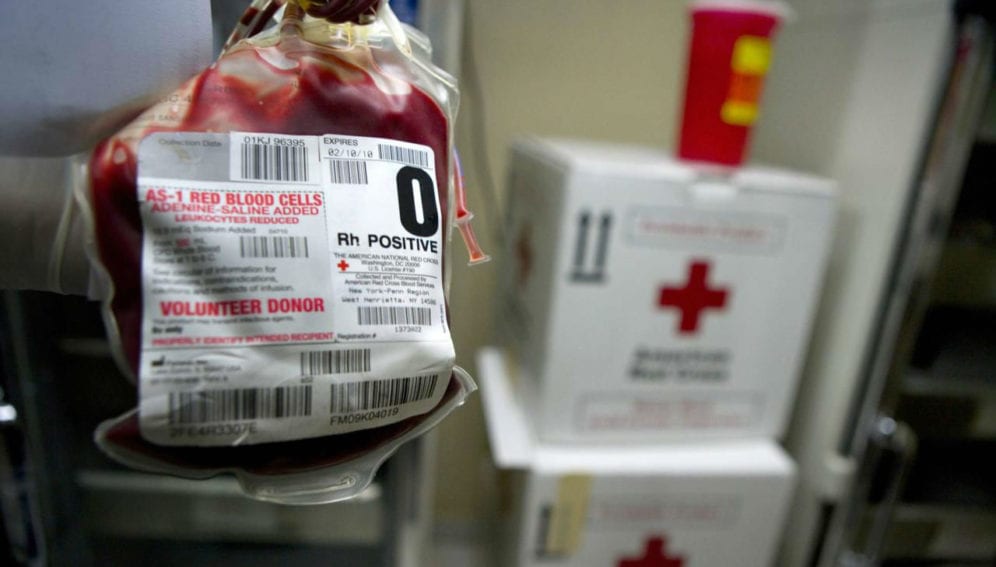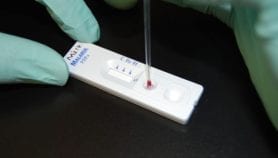Send to a friend
The details you provide on this page will not be used to send unsolicited email, and will not be sold to a 3rd party. See privacy policy.
The high prevalence of malaria parasites in blood for transfusion in Sub-Saharan Africa could be a major setback in the fight against the disease in the region, a study suggests.
The study presented this month (15-20 April) at the 7th Multilateral Initiative on Malaria (MIM) Pan African Malaria Conference in Dakar, Senegal, was a systematic review of the risk of transfusion-transmitted malaria from blood donors in Sub-Saharan Africa.
Selali Fiamanya, a co-author of the study and a research fellow at the Worldwide Antimalarial Resistance Network (WWARN), says they assessed the presence of malaria parasites in 22,508 potential blood donors in 24 studies conducted in nine Sub-Saharan Africa countries including Nigeria from 2000 to 2017.
“The study assessed the presence of malaria parasites in blood bags. Prevalence ranged from 6.5 per cent to 74.1 per cent in different study sites,” Fiamanya adds, noting that most of the studies were conducted in Central and West Africa, including more than ten studies from Nigeria.
“Without better vigilance, children receiving transfusions to address malaria’s impacts risk exposure to more malaria-causing parasites”
Selali Fiamanya, Worldwide Antimalarial Resistance Network (WWARN)
Researchers pooled data from the individual studies to generate an estimate of the presence of malaria parasites in blood donations across the region. They found that based on the 24 studies, malaria parasites could be detected in 23 per cent of donor blood.
“Malaria can be transmitted by blood transfusion, and efforts to combat it should include investigation into blood products, an important often life-saving intervention which is conducted across the world,” he tells SciDev.Net.
According to Fiamanya, who is also a research fellow at UK-based Oxford University’s Centre for Tropical Medicine and Global Health, there is blood bank burden of malaria in Sub-Saharan Africa, exposing pregnant women and children to malaria parasites.
"Without better vigilance, children receiving transfusions to address malaria’s impacts risk exposure to more malaria-causing parasites,” he says.
“Our research is only the first line of inquiry needed to better understand the risk for pregnant women and children who receive the majority of transfusions in this region.
“The same investigations need to be done in Latin America and Asia to investigate the blood bank burden of malaria in these regions too, as it is likely there is also a hidden source of infection.”
Philippe Guerin, a co-author of the study and the director of WWARN, notes, “The technical challenges of diagnosing Plasmodium parasites from blood donation products require attention, as does further exploration to better understand this risk and [how to] mitigate it.”
Policymakers in Sub-Saharan Africa, he explains, need to know that there is the possibility of a high risk of malaria transmission through their blood banks.
“We recommend further research into novel ways to screen and treat blood bank supplies, such as trials into the treatment of blood bags before patients receive a transfusion,” Guerin says.
He calls for closer collaboration between malaria researchers and the blood banks to further develop approaches to respond to these risks.
In another study conducted from June 2017 to September 2017 in Equatorial Guinea’s capital, Malabo, and presented at the same meeting, researchers indicated that out of 200 blood samples collected at the blood bank in Malabo that were deemed to be free of malaria infections using rapid diagnostic tests, 29.5 per cent were found to be having malaria parasites.“We used a novel, highly sensitive quantitative polymerase chain reaction designed for detecting all six malaria species infecting humans, says Claudia Daubenberger, a co-author of the study and a researcher at the Swiss Tropical and Public Health Institute. “Currently the used rapid diagnostic tests are not sensitive enough to detect low levels of Plasmodium falciparum infections and non-falciparum malaria species.”
Douglas Oimeke, senior resident, department of family medicine at The Aga Khan University East Africa, Kenya, tells SciDev.Net that any transfusion of blood and blood products that contain red blood cells carry with it the risk of malaria parasites transmission, with the risk being more clinically significant in malaria endemic areas.
”Clinically, all patients receiving blood transfusions containing red blood cells, are supposed to be monitored for any features suggestive of malaria parasites transmission,” he explains. “Signs and symptoms include but not limited to fever, chills, headache, yellowness of eyes and dark urine.”
This piece was produced by SciDev.Net’s Sub-Saharan Africa English desk.














